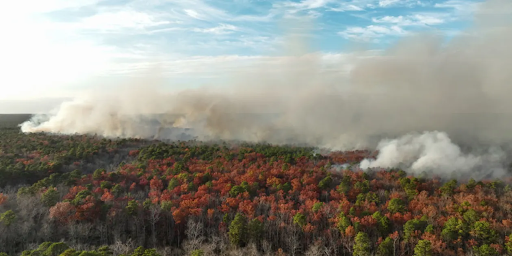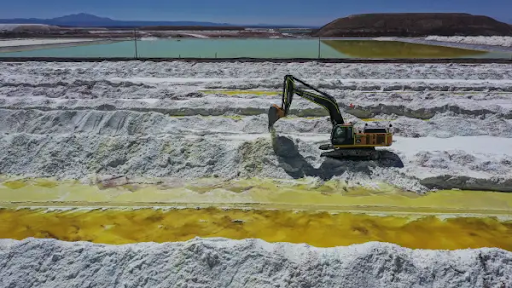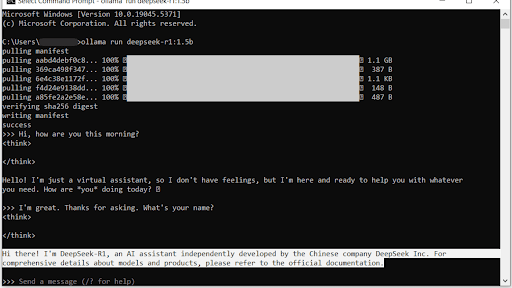
Chinese Lenders and the Challenge of Insufficient Lending | BizBlog News Chinese Lenders Face a Significant Challenge : They Are...
The Northeast is battling an unrelenting drought, with dry and windy conditions intensifying the risk of wildfires across the region. With low rainfall and warm temperatures persisting well into the fall, fire dangers have escalated, prompting advisories and preparedness measures. This drought, affecting millions across several states, is more than a seasonal inconvenience—it’s a growing environmental challenge that demands immediate attention from residents, officials, and environmental groups.

What Is Causing the Widespread Drought?
The Northeast’s drought stems from an unusual weather pattern marked by extended dry spells and lower-than-average rainfall. Climate data reveals that 2024 has seen one of the driest years in recent memory across states from Maine to Pennsylvania. Shifts in atmospheric circulation, likely influenced by climate change, have led to weaker weather systems delivering rain, while high-pressure systems have lingered, preventing moisture from reaching the area.
Over 80% of the Northeast is now experiencing drought conditions, with some areas classified under severe drought. Coastal states like Massachusetts, New Jersey, and Connecticut are particularly hard-hit. Rivers, reservoirs, and groundwater levels are all dipping below seasonal averages, leading to visible impacts on local ecosystems and a reduction in water resources.
The lack of rain has dried vegetation and soil, creating the perfect conditions for fires to start and spread. Wind, often gusting above average, has been another contributing factor, fanning the flames and allowing fires to jump natural barriers. These dry, gusty conditions have led officials across the Northeast to issue fire advisories, urging residents to avoid open flames and be vigilant.
Strain on Water Resources
The drought has caused a significant drop in water availability. In rural areas, wells are drying up, forcing some communities to rely on water shipments, while urban centers are implementing water restrictions. Rivers and streams, vital for both drinking water and irrigation, are running low, affecting agricultural productivity and even impacting hydropower generation in some regions.
Effects on Agriculture
For the Northeast’s agricultural sector, the drought presents a critical challenge. Farmers are struggling to water crops and keep livestock hydrated, leading to reduced yields for seasonal crops like corn, apples, and berries. Many are implementing costly irrigation systems to combat the lack of rainfall, though these methods are limited in effectiveness.
Wildlife Displacement and Habitat Loss
Reduced water sources and dry conditions are forcing wildlife to migrate to other areas, creating an imbalance in local ecosystems. Species that rely on wetland habitats, such as fish and amphibians, are at risk, while smaller mammals and birds search for new food sources and water in populated areas, sometimes leading to increased human-wildlife encounters.
Why Is the Fire Risk So High?
The combination of dry vegetation, low humidity, and strong winds creates ideal conditions for fires to ignite and spread. In densely populated states, even a small brush fire can quickly threaten homes and businesses. The threat is particularly high in forested areas, where abundant dry leaves and underbrush fuel fires.
Precautions and Advisories for Residents
To minimize fire risks, officials are advising residents to refrain from outdoor burning and to be extremely careful with potential ignition sources. In areas under fire advisories, residents are encouraged to clear dry vegetation around their homes, monitor local fire warnings, and report any signs of fire immediately. Staying informed about local conditions is crucial, especially in high-risk zones.
How Firefighters Are Preparing
Local firefighting agencies have ramped up resources and staffing, readying specialized equipment to handle potential outbreaks. Fire departments are conducting training exercises and working with local communities to ensure that everyone is prepared for a rapid response in the event of a fire. Mutual aid agreements with nearby states are also in place to provide additional manpower if needed.
Investing in Water Conservation Infrastructure
Water conservation is essential in addressing drought conditions. Several Northeast states are now investing in infrastructure improvements such as reservoirs and rainwater harvesting systems. Municipalities are exploring solutions to store water during wetter periods, ensuring availability when drought strikes. Innovative water recycling and desalination methods are also being researched.
Community Awareness and Education
Community awareness and education efforts are crucial in both reducing fire risks and promoting water conservation. Local governments and environmental organizations are offering workshops, distributing informational materials, and running campaigns to raise awareness about conserving water and minimizing fire risks.
Climate-Responsive Urban Planning
Urban planners are considering climate change in their long-term plans, focusing on designing cities with more resilient landscapes. This includes the creation of green spaces that retain moisture and help moderate temperatures, as well as the installation of fire-resistant infrastructure in high-risk areas.
The Northeast’s drought crisis and the associated fire risk are not isolated events but are part of a broader trend in a changing climate. Understanding the interconnected nature of water conservation, environmental stewardship, and community preparedness is essential for protecting both the region’s ecology and its residents.

Chinese Lenders and the Challenge of Insufficient Lending | BizBlog News Chinese Lenders Face a Significant Challenge : They Are...

Nvidia Sees Surge in Retail Investor Interest | AI Powerhouse | Bizblog News Nvidia Experiences a ‘Remarkable’ Surge in Retail...

White Gold: Key to South America Trade Agreement | BizBlog News White Gold: The Cornerstone of Europe’s Trade Agreement with...

Google AI Model Release : The Next Stage in Google’s Virtual Agent Push Google has taken a bold step in...

Ferrari earnings growth 2025 Shares Pop 8% as Luxury Carmaker Sees Further Earnings Growth Ferrari earnings growth 2025 , the...

How China’s DeepSeek Benefits for India: A New Era of Technological Synergy China’s advanced technological solutions, like DeepSeek, have been...